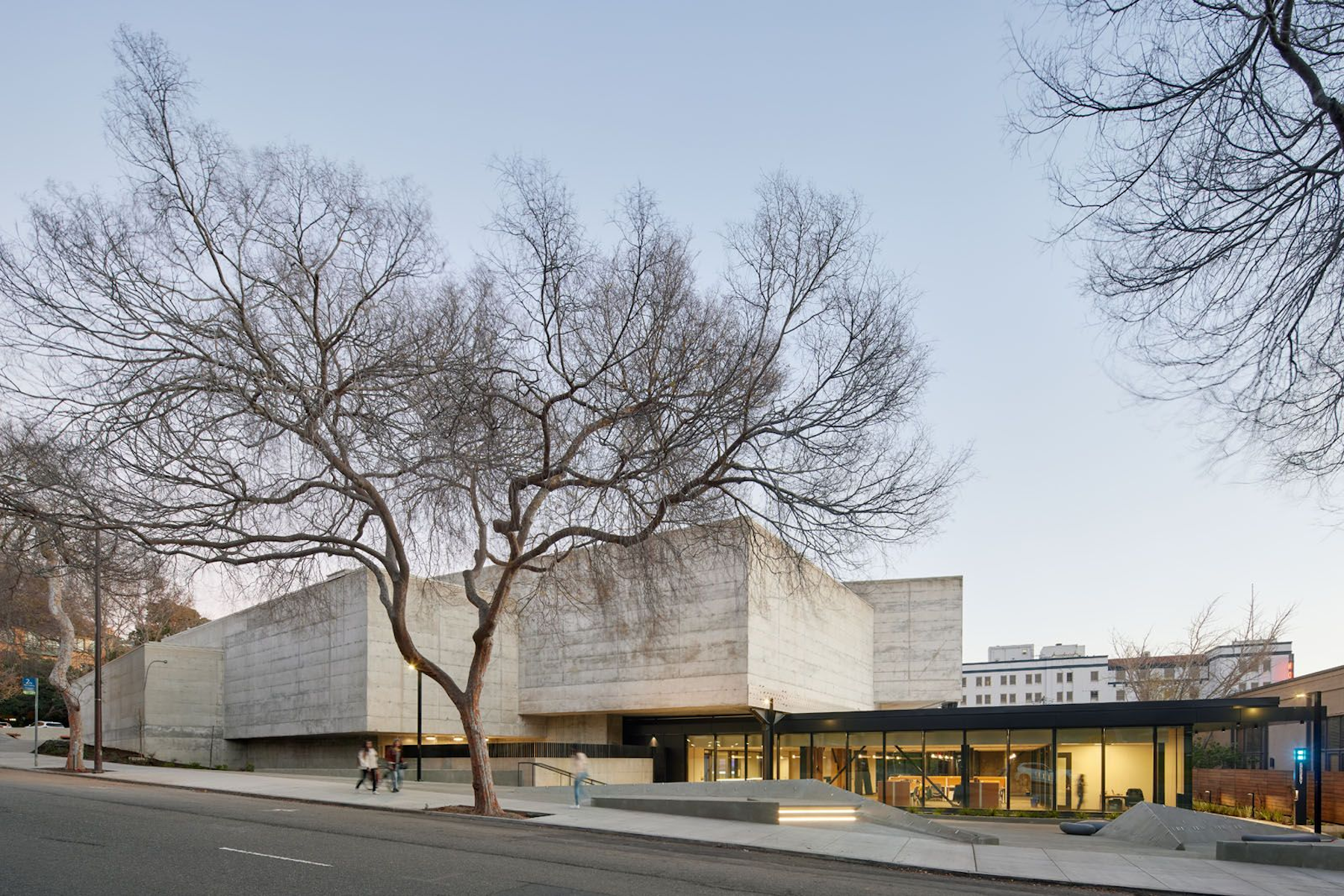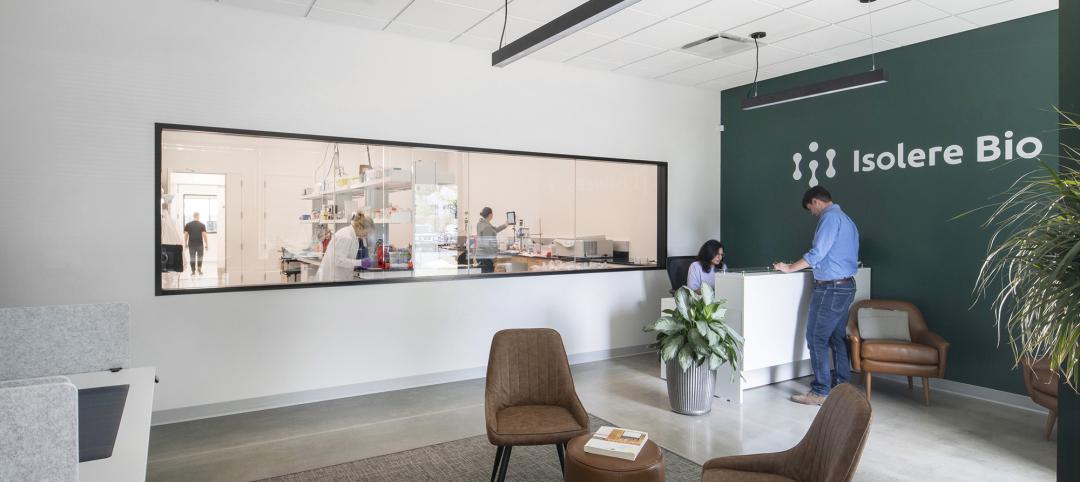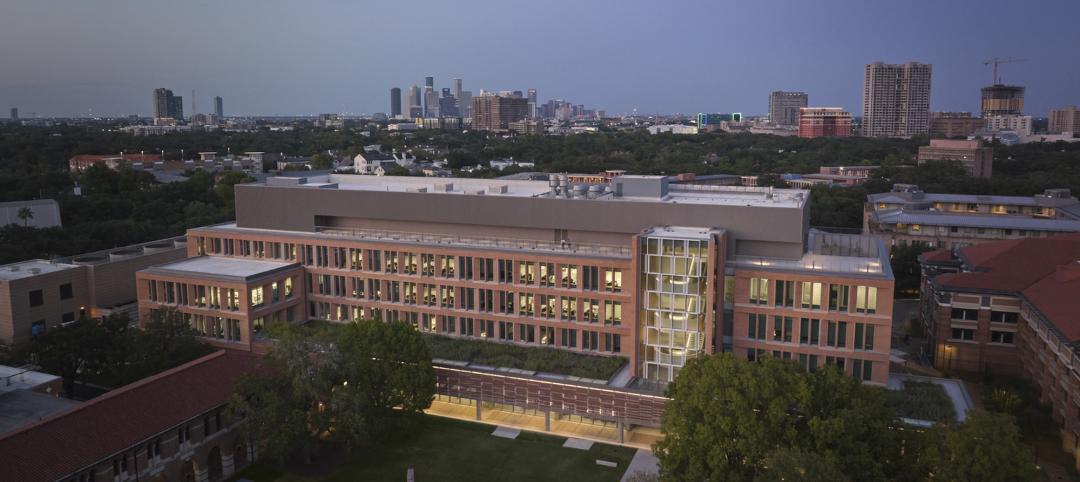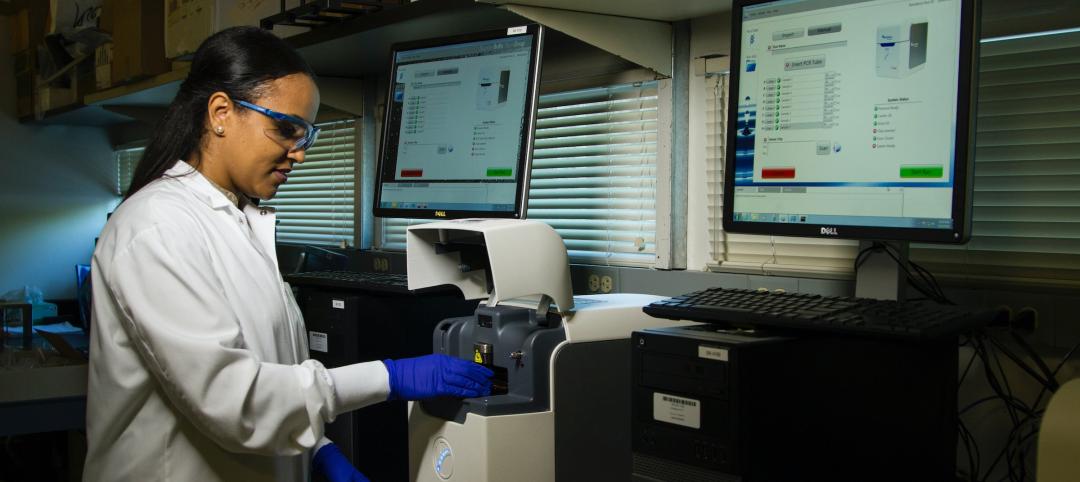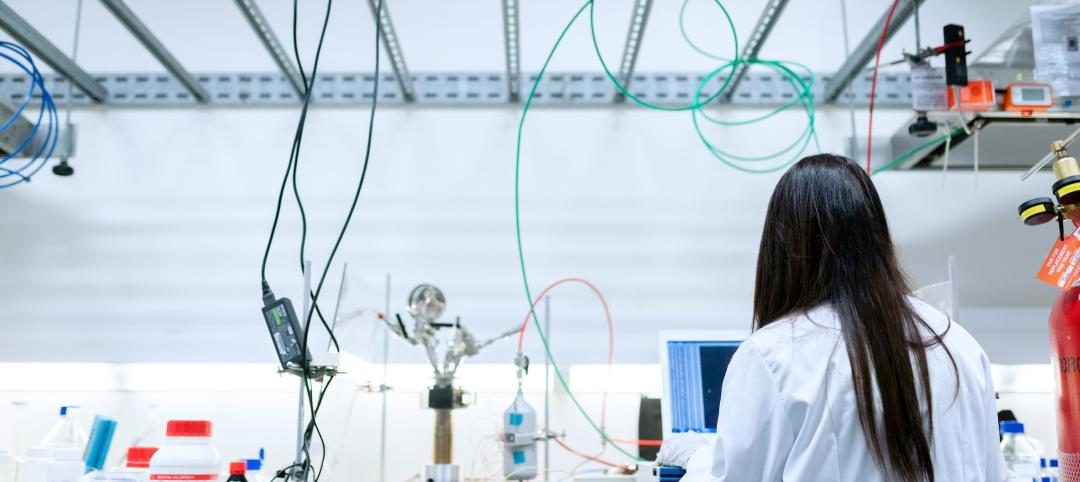After extensive renovation and an addition, the former Berkeley Art Museum and Pacific Film Archive at the University of California, Berkeley campus reopened in May 2022 as a modern life science lab building. The brutalist-style, historically significant structure, designed by Mario Ciampi, had been vacated in 2014 after being deemed seismically unsafe. MBH Architects, first brought on for a feasibility study, designed the renovations needed to make the building well-suited for life science laboratories while preserving the structure’s historical significance.
The design for the Bakar BioEnginuity Hub includes a glass-fronted addition and two new public plazas, as well as well-equipped research space, which is often cost-prohibitive for the young companies the facility will accommodate. MBH identified four major challenges to renovating the structure to satisfy the life science requirements:
- Upgrading structural performance to the current code
- Designing a life science and coworking program to fit within the building’s irregular geometry
- Addressing life safety and substantial mechanical modernization
- Performing renovations and upgrades while preserving the building’s historical character
Seismic performance, water intrusion, and acoustic performance, were addressed while bringing the building up to code. Mechanical, electrical, and plumbing infrastructure was overhauled, including the replacement of existing gas service with all-electric systems. This allowed the project to achieve low EUI, operational carbon neutrality, and Net-Zero HVAC water-use, as well as to meet LEED Gold requirements. Because the building is nearly all concrete, including floors, walls, and ceilings, the team was challenged to make all upgrades, including new modern lighting while minimizing the amount of cutting of the original structure.
Programmatic elements include a laboratory, open office areas, collaboration spaces, private offices, conference rooms, an auditorium, an undergraduate program area, terraces, and public outdoor spaces. The former museum’s upper-level galleries became glass-fronted labs that overlook dramatic cantilevered ramps hanging within a sky-lit double height space. These ramps and other parts of the museum’s circulation system that once led visitors from gallery to gallery have been preserved to foster interaction between groups of people who might not otherwise have an occasion to converse. This attribute furthers the university’s goal of encouraging innovation among scientists.
To spiff up what could otherwise be sterile-looking lab spaces, the design team infused the labs with liveliness by making walls brightly colored and importing natural light by uncovering and replacing skylights that had been covered to protect artwork from ultraviolet light damage. Workspaces and common area materials provide forms that contrast and complement the original structure and provide a welcoming environment.
On the Building Team:
Architect/Designer: MBH Architects
Structural Engineer: Forell | Elsesser
MEP: PAE
Historical Consultant: Page and Turnbull
Acoustics Consultant: Salter Associates
Lab Consultant: ZGF Architects
Civil Engineer: Luk & Associates
Landscape Architects: Jett Landscape Architecture + Design
General Contractor: Plant Construction


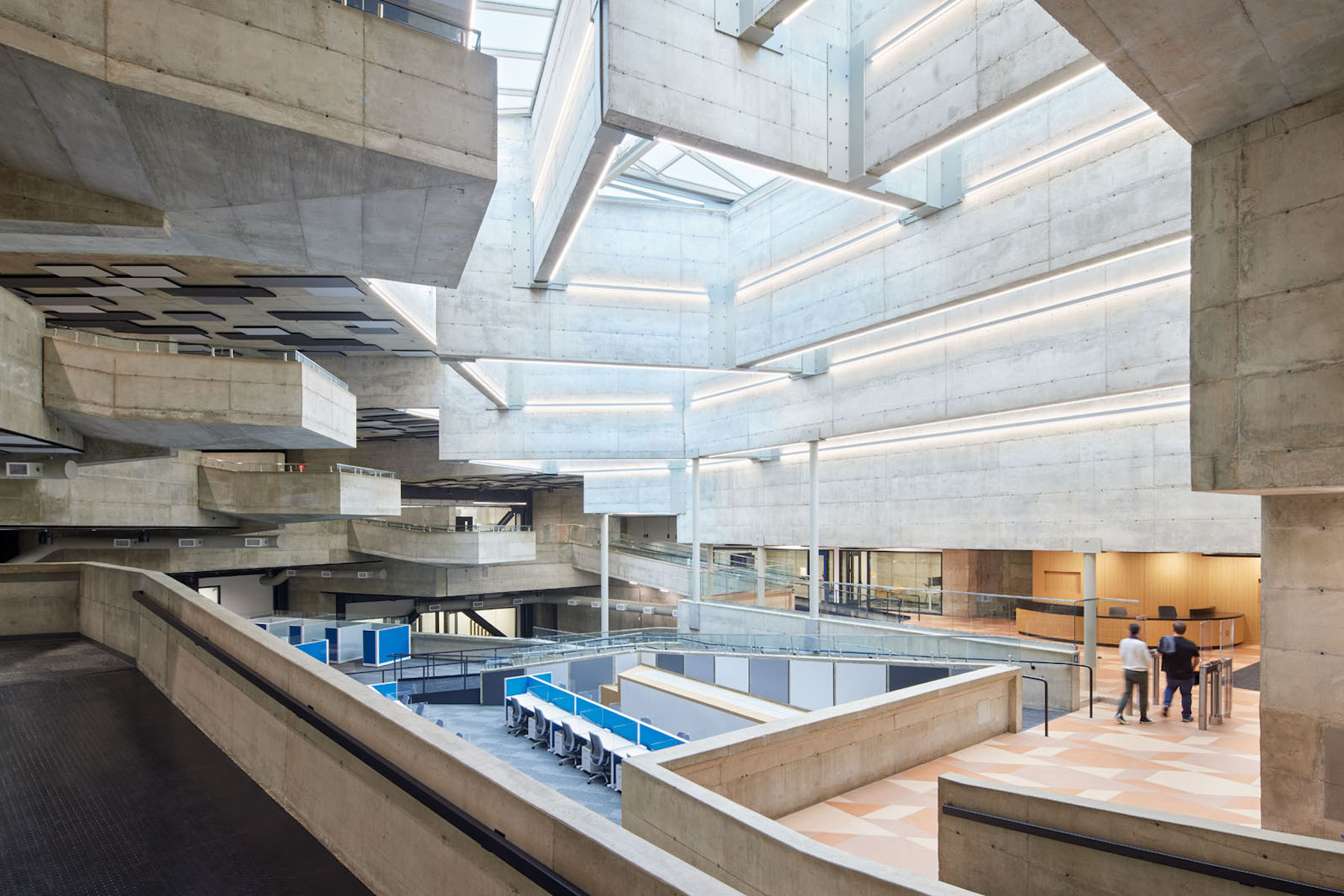
Related Stories
Urban Planning | Feb 5, 2024
Lessons learned from 70 years of building cities
As Sasaki looks back on 70 years of practice, we’re also looking to the future of cities. While we can’t predict what will be, we do know the needs of cities are as diverse as their scale, climate, economy, governance, and culture.
Laboratories | Feb 5, 2024
DOE selects design-build team for laboratory focused on clean energy innovation
JE Dunn Construction and SmithGroup will construct the 127,000-sf Energy Materials and Processing at Scale (EMAPS) clean energy laboratory in Colorado to create a direct path from lab-scale innovations to pilot-scale production.
Laboratories | Jan 25, 2024
Tactical issues for renovating university research buildings
Matthew Plecity, AIA, ASLA, Principal, GBBN, highlights the connection between the built environment and laboratory research, and weighs the benefits of renovation vs. new construction.
Laboratories | Jan 22, 2024
Speculative vs purpose-built labs: Pros and cons
Hanbury's George L. Kemper, AIA and R. David Cole, AIA share the unique advantages and challenges of both spec. and purpose-build labs.
University Buildings | Jan 18, 2024
Houston’s Rice University opens the largest research facility on its core campus
Designed by Skidmore, Owings & Merrill (SOM), the 251,400-sf building provides students and researchers with state-of-the-art laboratories, classrooms, offices, and a cafe, in addition to multiple gathering spaces.
Healthcare Facilities | Jan 7, 2024
Two new projects could be economic catalysts for a central New Jersey city
A Cancer Center and Innovation district are under construction and expected to start opening in 2025 in New Brunswick.
Laboratories | Jan 5, 2024
Office conversions are helping to meet the growing demand for life-science space
Ware Malcomb and Rock Creek Property Group led the team that recently completed the adaptive reuse of two office buildings in Maryland.
Mass Timber | Jan 2, 2024
5 ways mass timber will reshape the design of life sciences facilities
Here are five reasons why it has become increasingly evident that mass timber is ready to shape the future of laboratory spaces.
Giants 400 | Nov 28, 2023
Top 55 Laboratory Construction Firms for 2023
Whiting-Turner, DPR Construction, STO Building Group, Skanska, and Hensel Phelps top BD+C's ranking of the nation's largest laboratory general contractors and construction management (CM) firms for 2023, as reported in Building Design+Construction's 2023 Giants 400 Report.
Giants 400 | Nov 28, 2023
Top 60 Laboratory Engineering Firms for 2023
Jacobs, Affiliated Engineers, Burns & McDonnell, Tetra Tech, and WSP head BD+C's ranking of the nation's largest laboratory engineering and engineering/architecture (EA) firms for 2023, as reported in Building Design+Construction's 2023 Giants 400 Report.


